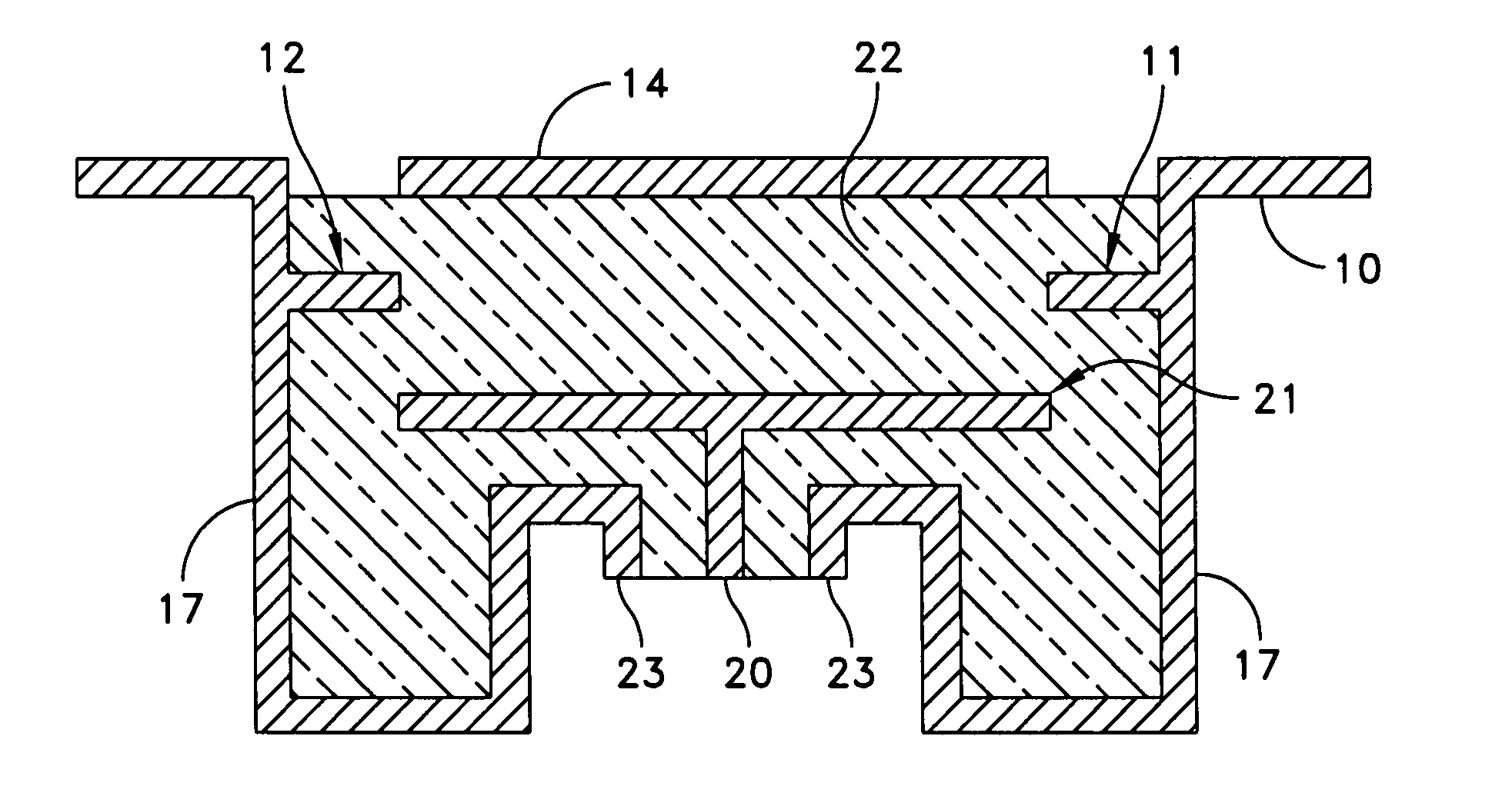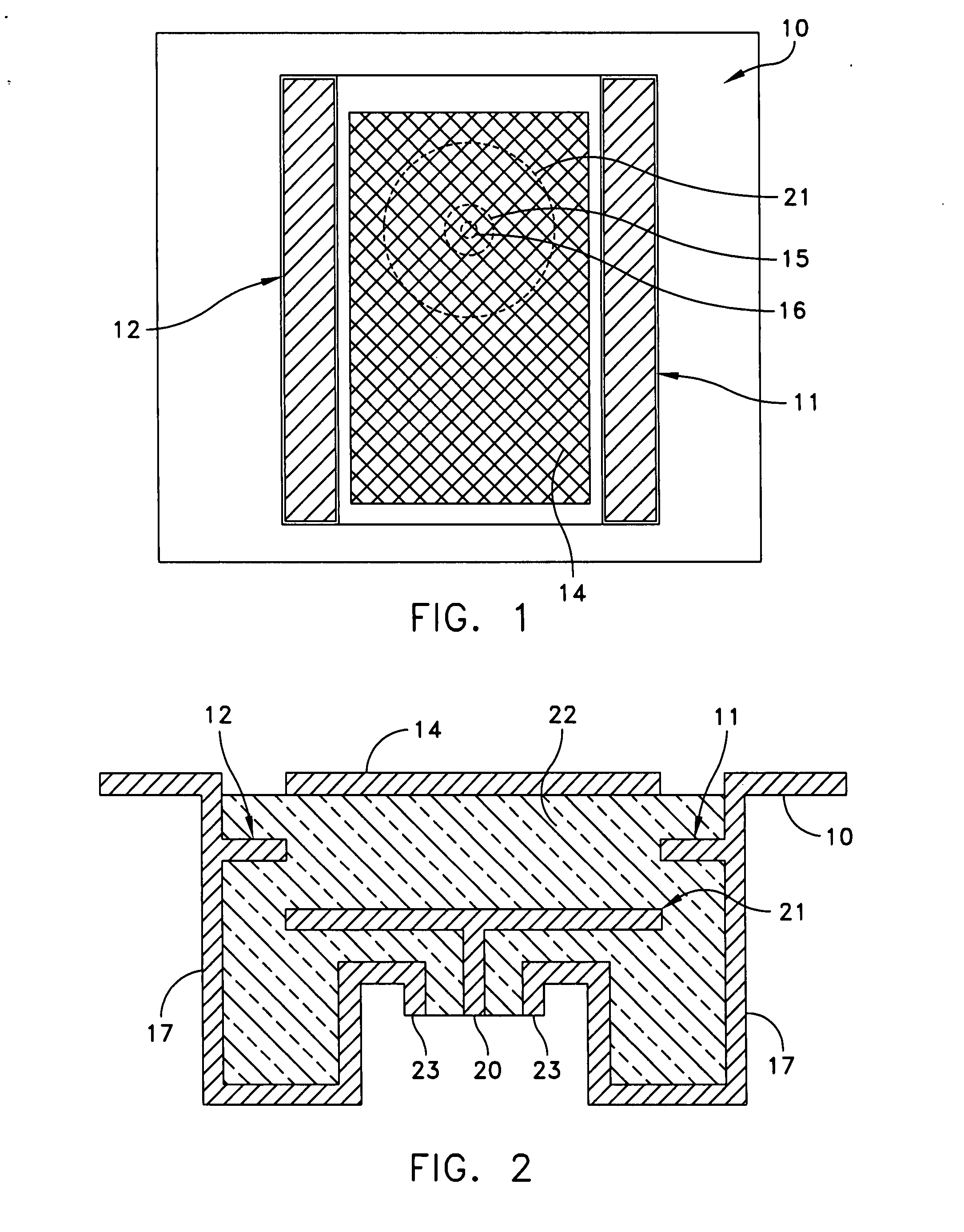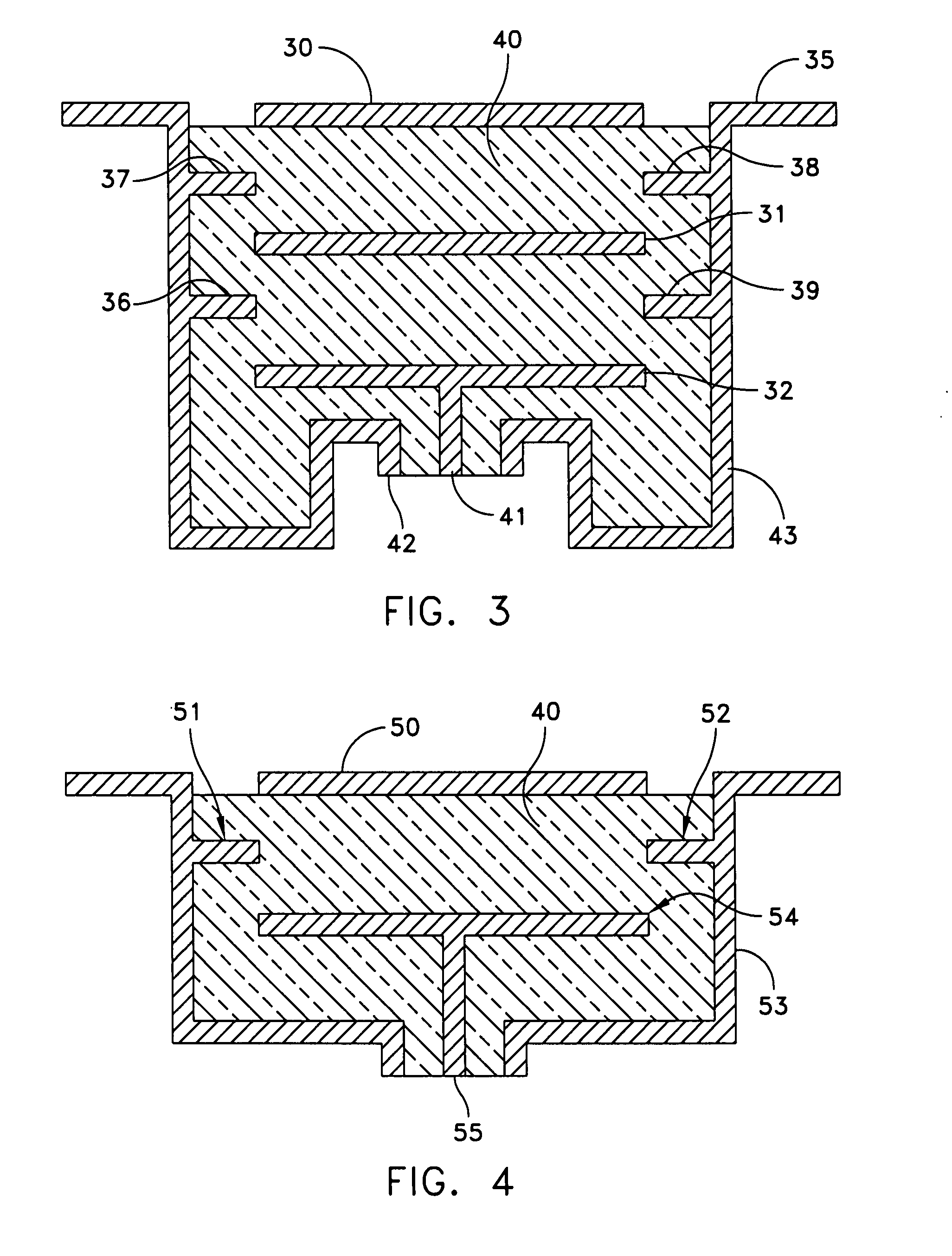Patch antenna including septa for bandwidth conrol
a patch antenna and bandwidth conrol technology, applied in the direction of resonant antennas, substantially flat resonant elements, radiating element structural forms, etc., can solve the problems of increasing the thickness of the antenna, increasing the lateral size of the antenna, and the device's relatively narrow bandwidth, so as to reduce the total cavity thickness, increase mutual coupling, and allow the effect of bandwidth control
- Summary
- Abstract
- Description
- Claims
- Application Information
AI Technical Summary
Benefits of technology
Problems solved by technology
Method used
Image
Examples
Embodiment Construction
[0026]Referring to FIG. 1, there is shown a top plan schematic view of a patch antenna employing septa according to an exemplary embodiment of this invention. Reference numeral 10 refers to a metal housing cavity which contains a patch antenna. In an exemplary embodiment, the metal housing cavity comprises a metallized surface electro-plated on a plastic or composite core dielectric. The patch antenna has a top metal patch 14 which is disposed and positioned on the surface of a dielectric material. Beneath the patch, there is a shown a coaxial transmission line consisting of a center conductor 16 surrounded by a shield 15. The patch 14 as indicated is disposed upon the surface of a dielectric material. The septa are shown as elements 11 and 12. Each septum as will be more clearly seen in FIG. 2, is positioned between a top parasitic patch (identified as patch 14) and a bottom direct driven patch (identified as patch 21). Referring to FIG. 2, the septa 11, 12 are positioned midway be...
PUM
 Login to View More
Login to View More Abstract
Description
Claims
Application Information
 Login to View More
Login to View More - R&D
- Intellectual Property
- Life Sciences
- Materials
- Tech Scout
- Unparalleled Data Quality
- Higher Quality Content
- 60% Fewer Hallucinations
Browse by: Latest US Patents, China's latest patents, Technical Efficacy Thesaurus, Application Domain, Technology Topic, Popular Technical Reports.
© 2025 PatSnap. All rights reserved.Legal|Privacy policy|Modern Slavery Act Transparency Statement|Sitemap|About US| Contact US: help@patsnap.com



